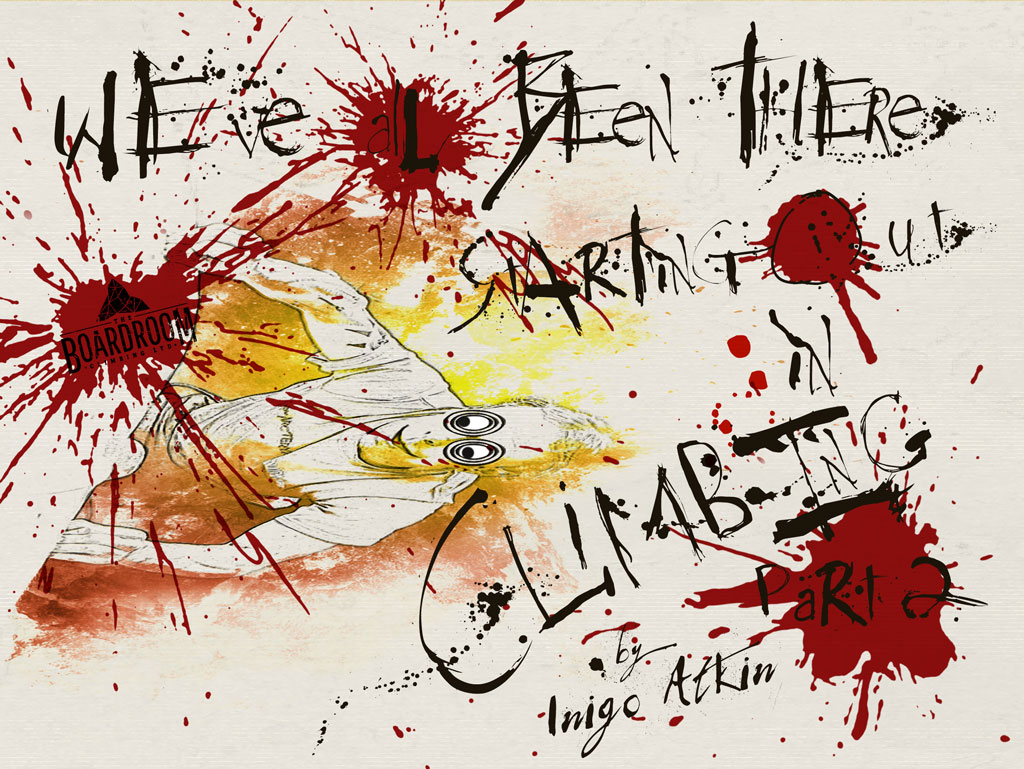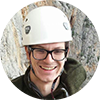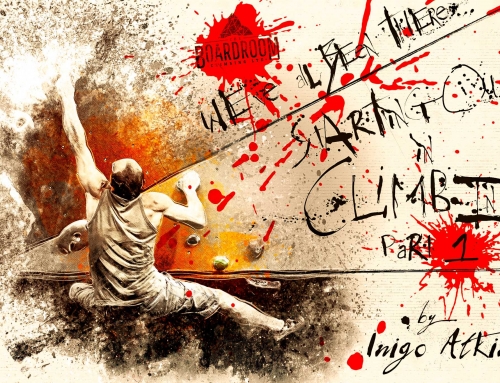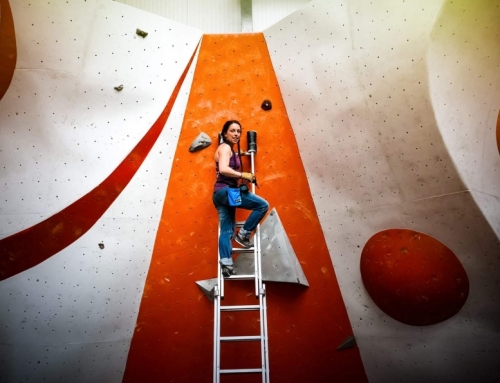As mentioned in our article on some of the general hurdles new climbers face, climbing is a unique sport because the strange movements it requires are so different to other sports. This makes climbing exciting and unusual, but until you get the hang of some of those movements it can seem a bit alien. This article is all about some of the techniques you need to nail if you want to start trying out all the weird and wacky positions climbing can put you in.
Strange holds…
“This looks like a great hold. But it’s upside down! What’s going on?”
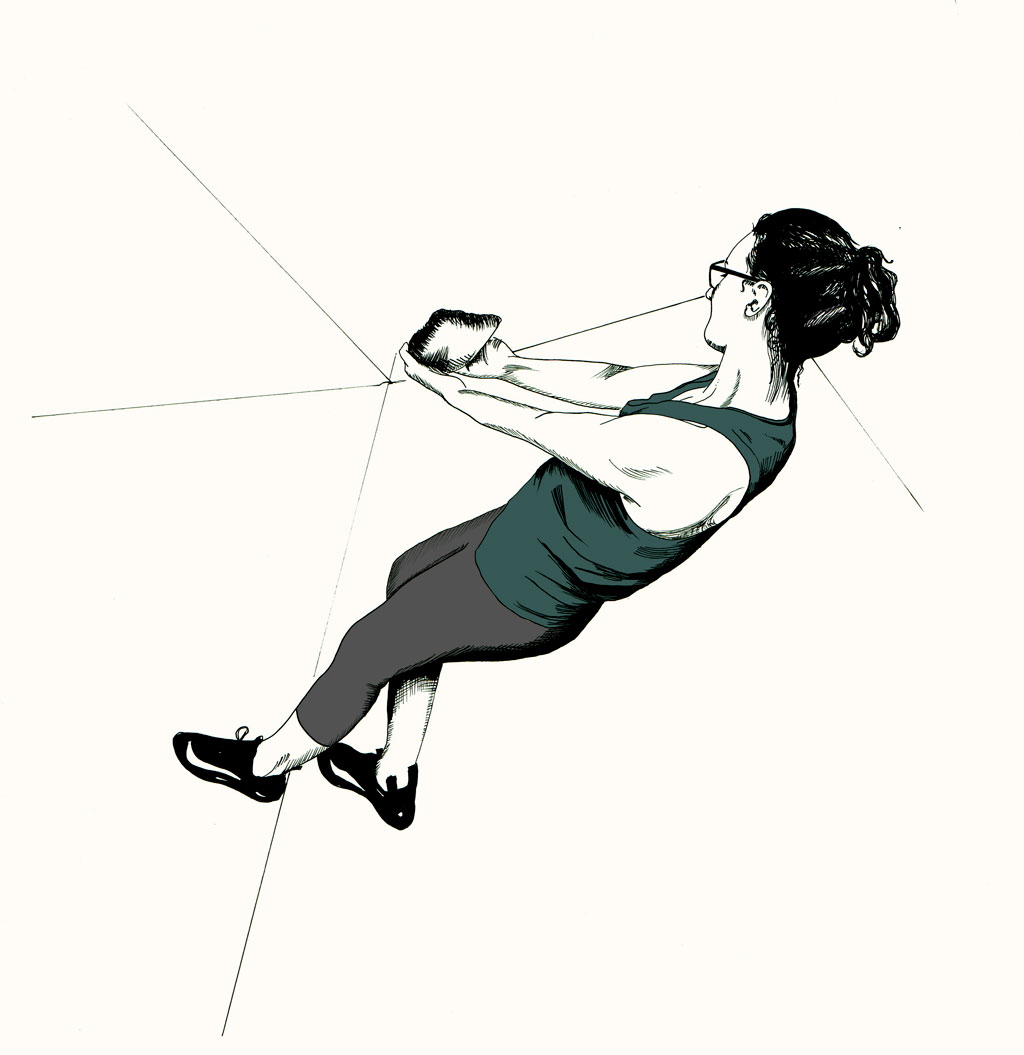
~using an undercut
The key to making an undercut work is putting pressure through the feet.
Undercuts are surprising – when you find them on climbs, both indoors and outdoors, often they are very good, positive holds but you have to know how to use them. Otherwise they are useless. The key to making an undercut work is putting pressure through the feet. It can feel a bit weird, because you need to lift your feet really high to make this work but persevere – undercuts are really common, and it’s important to be strong on them.
“Can I hold the side of the wall?”
Normally – yes, but don’t reach all the way round to the back of the wall! The edges of walls, or big outward facing corners, are usually called aretes. At most climbing walls and on lots of outdoor routes or problems, using aretes is allowed most of the time. At the Boardroom, the aretes are always in. They often make for a great hold, but think carefully about where you’re putting your feet…if you lose body tension you might find yourself spinning off quicker than you think!
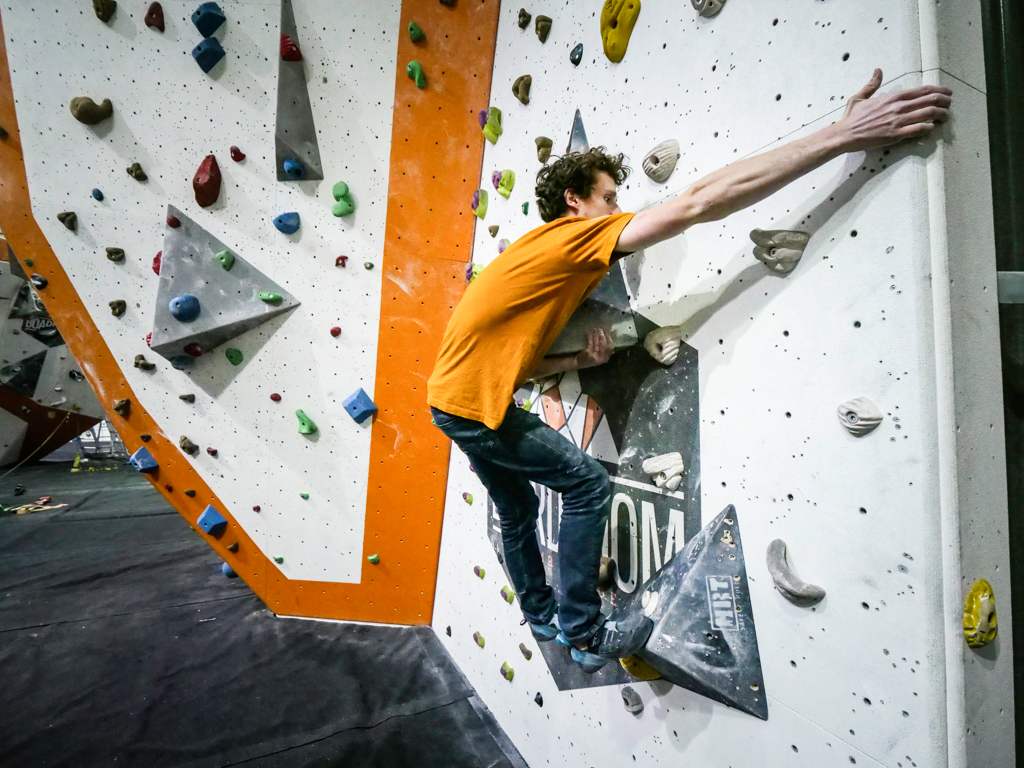
~Visiting French setter Morgan Monet utilising the features on the wall, in this case both volumes and the arête
“That looks like a good hold, but is it just part of the wall?”
Volumes are big sections of shaped board used to change the nature of an indoor wall. Sometimes they can be quite flat, and others are more like a ‘feature’ with plenty of edges to grab. They usually form integral parts of problems, and are brilliant for making indoor climbing a bit different. If you haven’t seen one before however, you might be a bit confused about how to use it. Imagine it’s a normal hold – see if you can spot the best place to put your hand or foot.
Some thoughts on climbing movement…
The above are examples of some of the strange holds you might see, but what about how you move between them?
Think with your feet
The biggest mistake most beginners make is to forget about their feet. Because our eyes naturally rest at about the height of our hands on a climbing wall, we’re always looking for handholds. Get in the habit of looking for footholds while climbing – if you do this properly your technique will vastly improve.
Look ahead
Boardroom Head Instructor Freddie points out that we actually learn how to climb ‘backwards’ – we learn how to do a move, then we think about how we should have set up for that move, and lastly we learn how to plan that move in advance. But in actual fact, top climbers do those things in reverse, so we should try and think of them in that order. Before you get on a route or boulder problem, plan where your hands and feet will go. Think about any strange looking moves or positions. Lastly, think about how you’re going to execute each move. You might find this helps you understand your own climbing a bit better.
Save energy
Even on short boulder problems, it’s easy to burn energy quickly. One thing guaranteed to do just that is climbing with bent arms – if you can keep them straight you’ll find you can spend much longer on the wall. Keeping your arms straight allows you to hang weight through your skeleton, rather than your muscles having to hold all your weight. Give it a try – climb a problem slowly with your arms bent the whole time, then climb it quickly while swinging on straight arms. It should be obvious which is more efficient!
Keeping your arms straight allows you to hang weight through your skeleton, rather than your muscles having to hold all your weight.
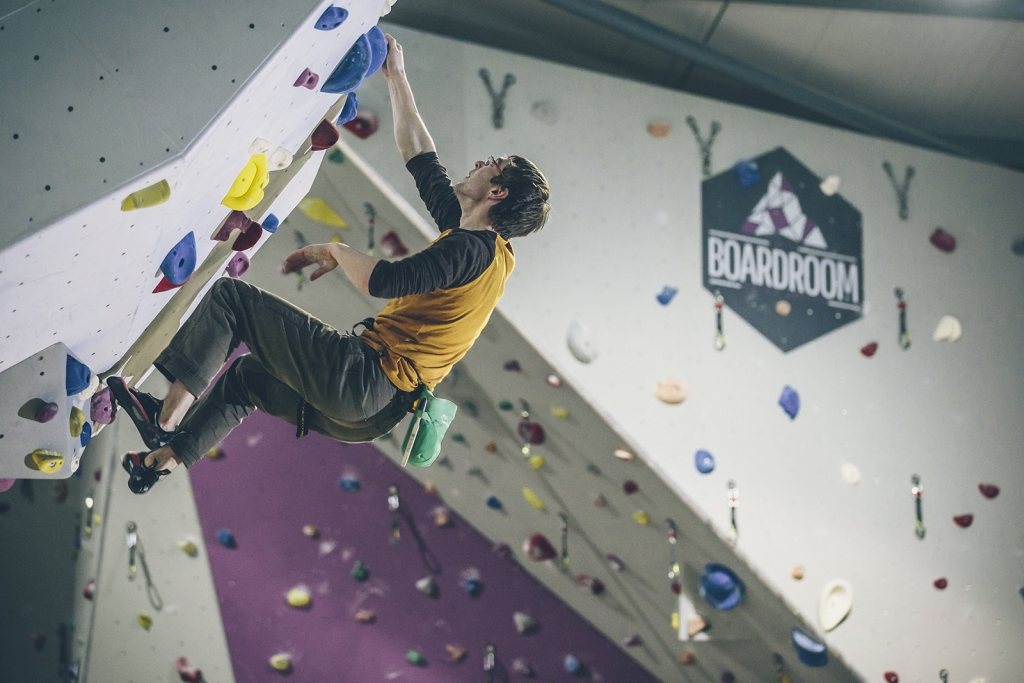
~Ben Bransby keeping it relaxed and conserving energy on the Psicobloc at The Boardroom
